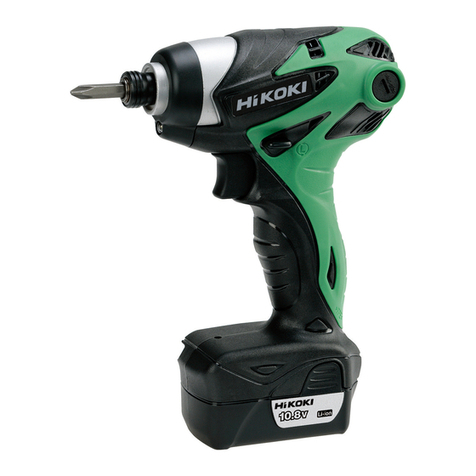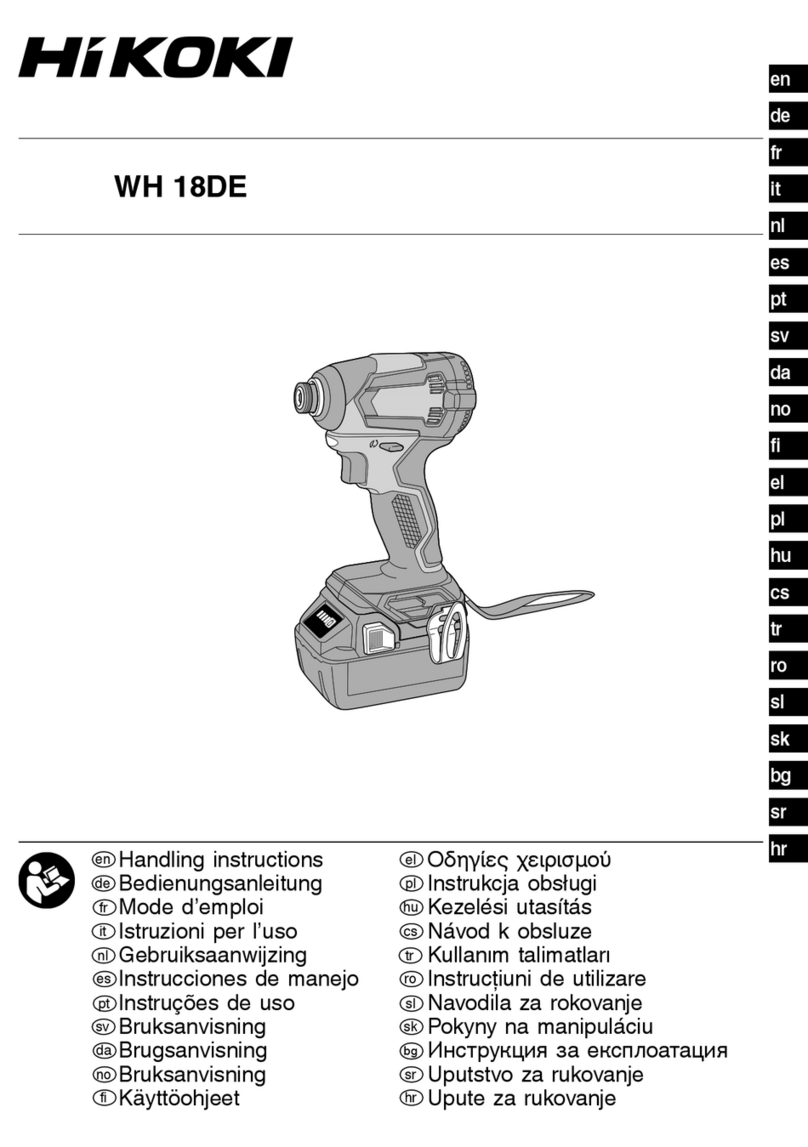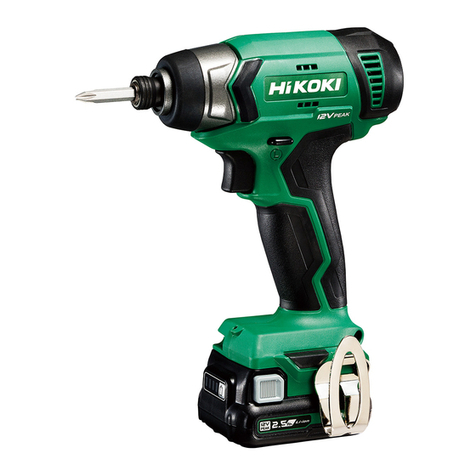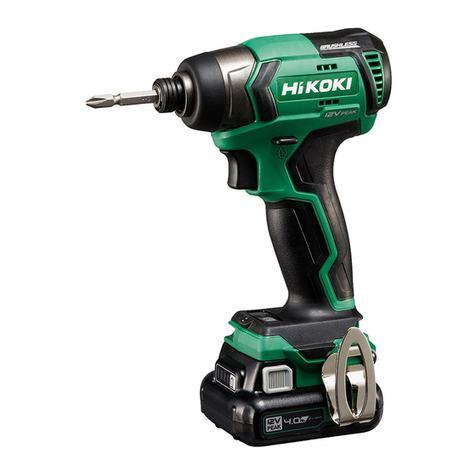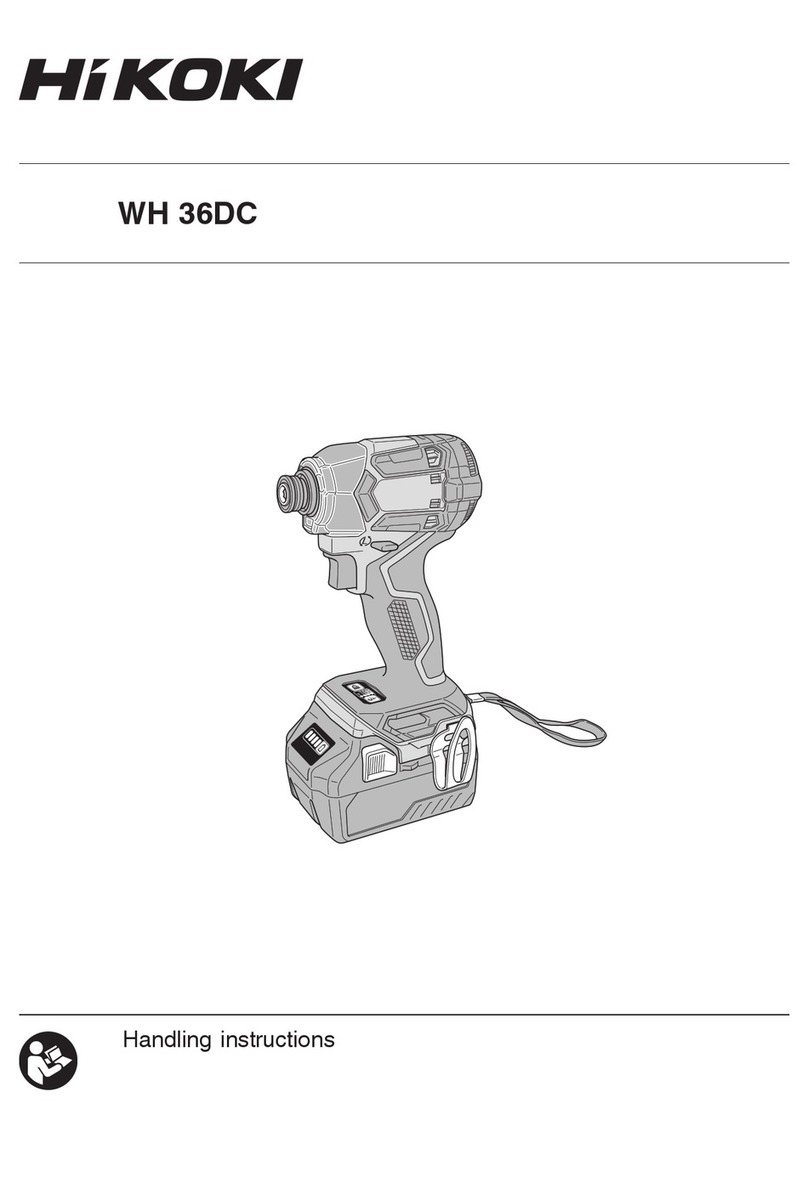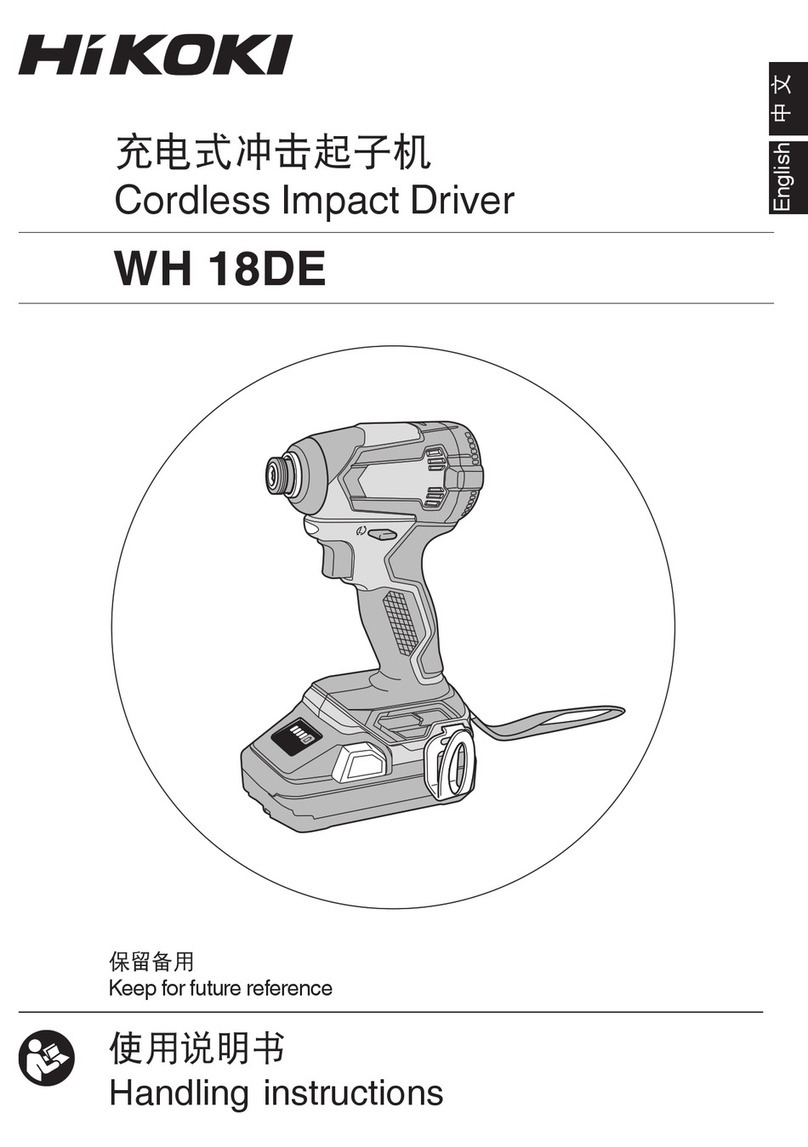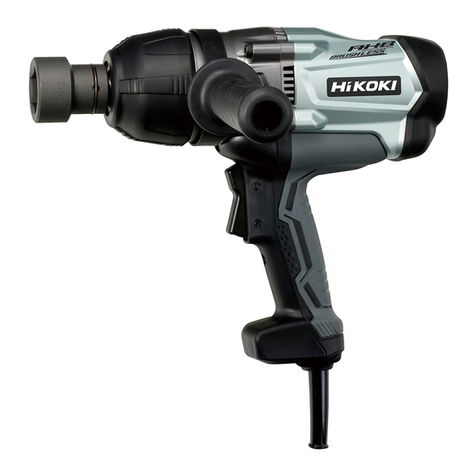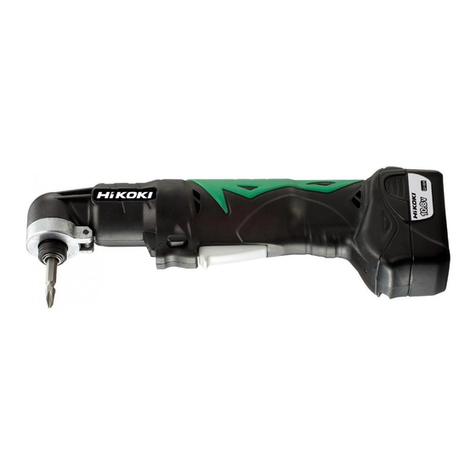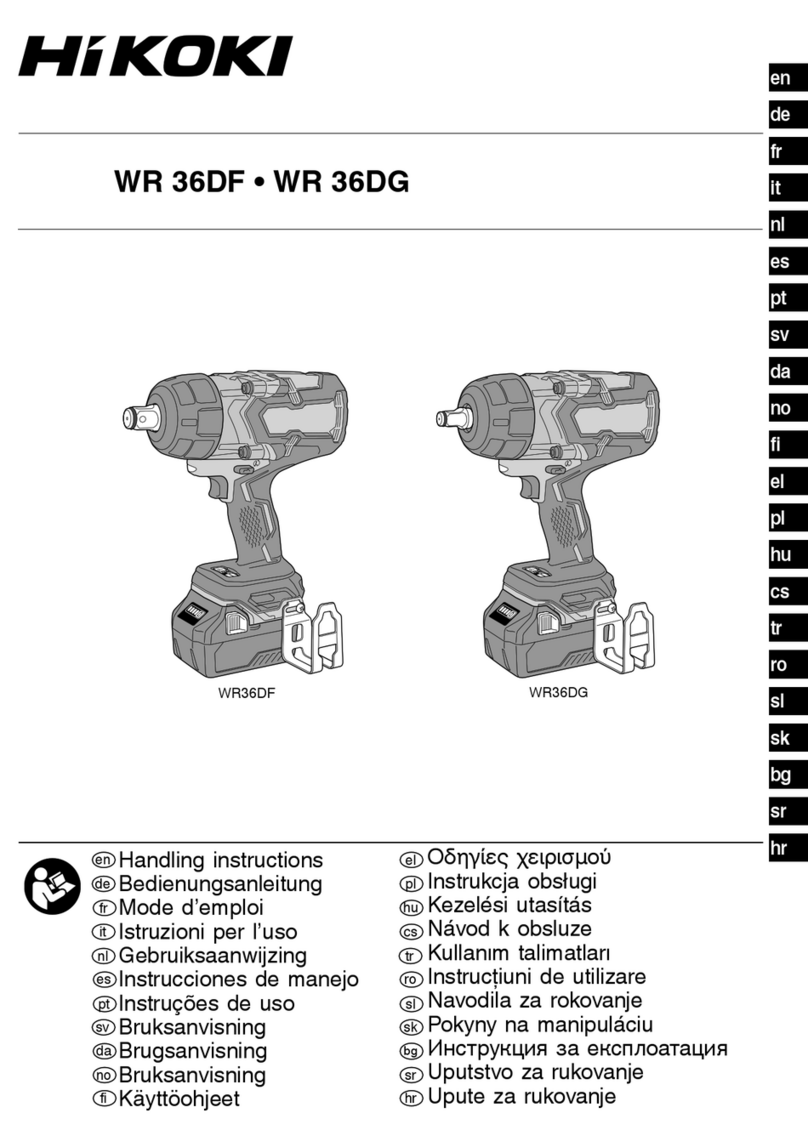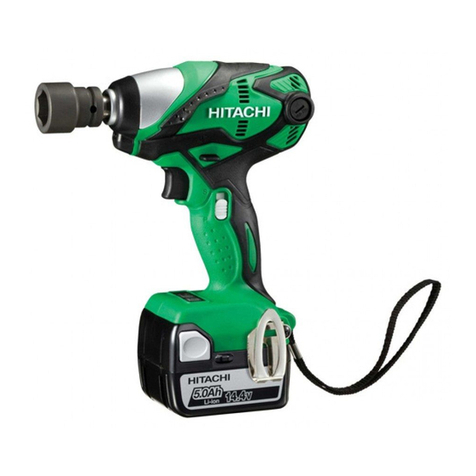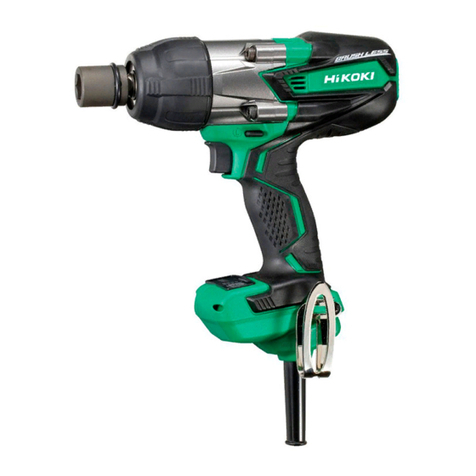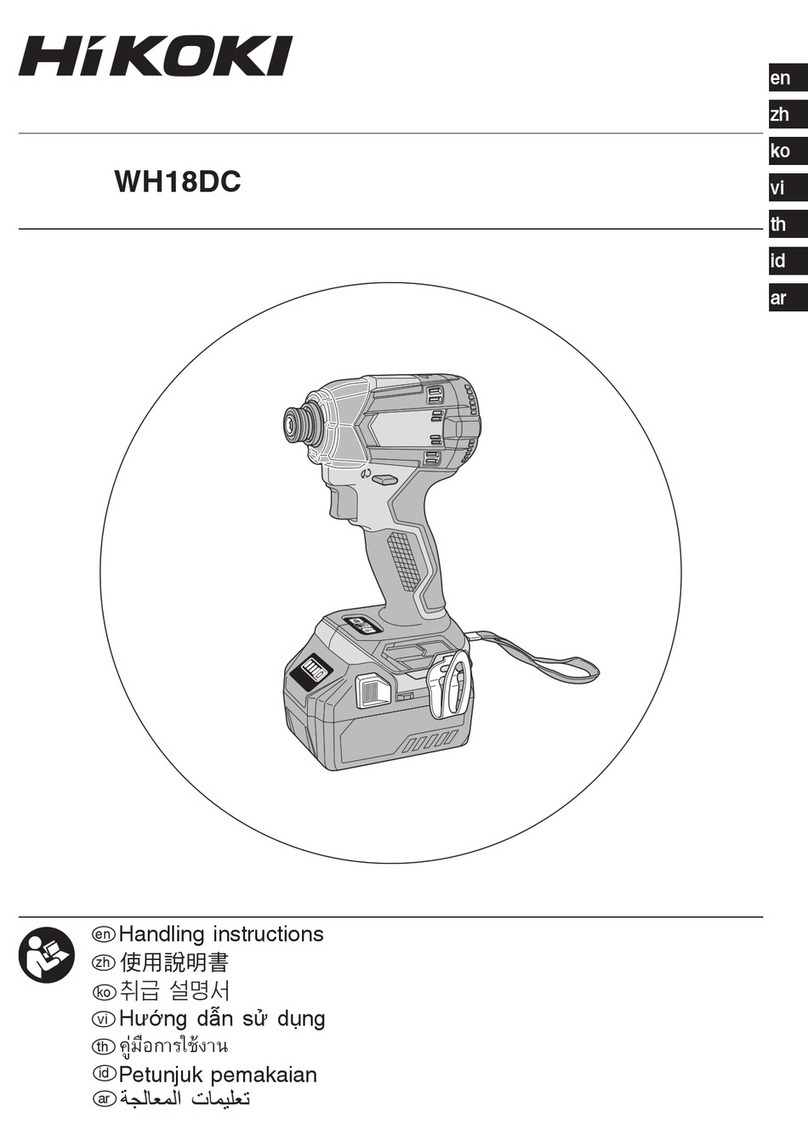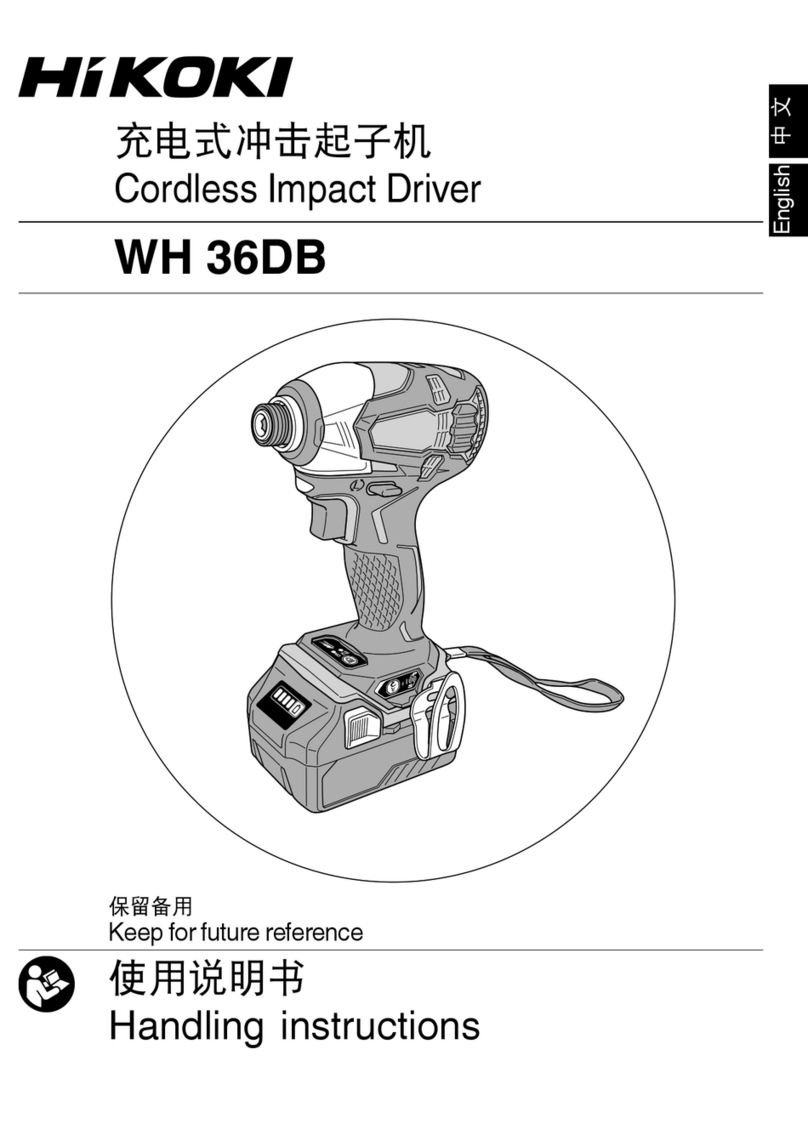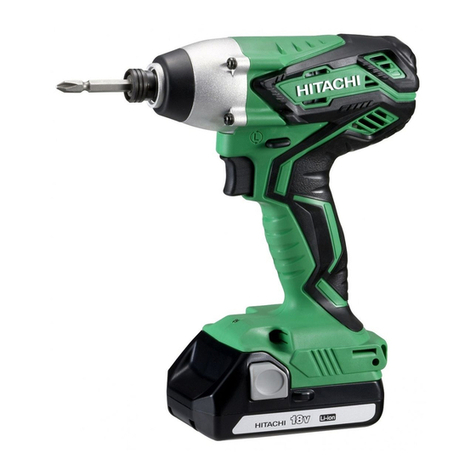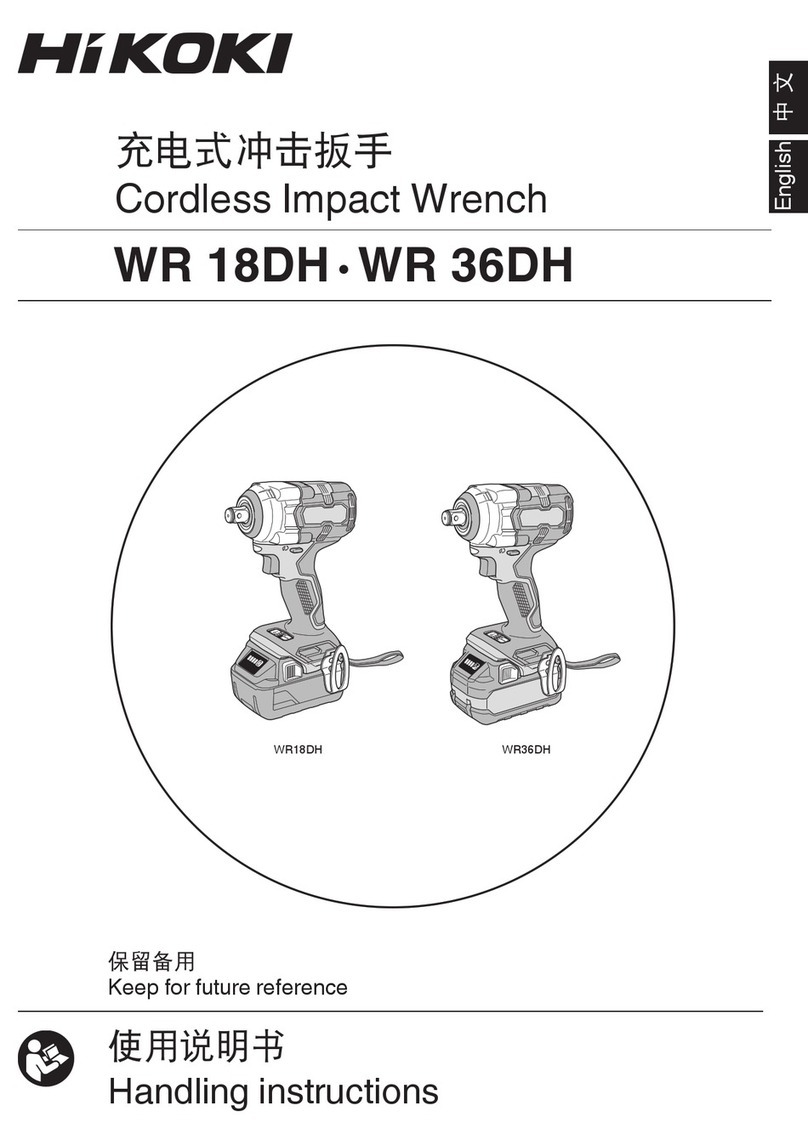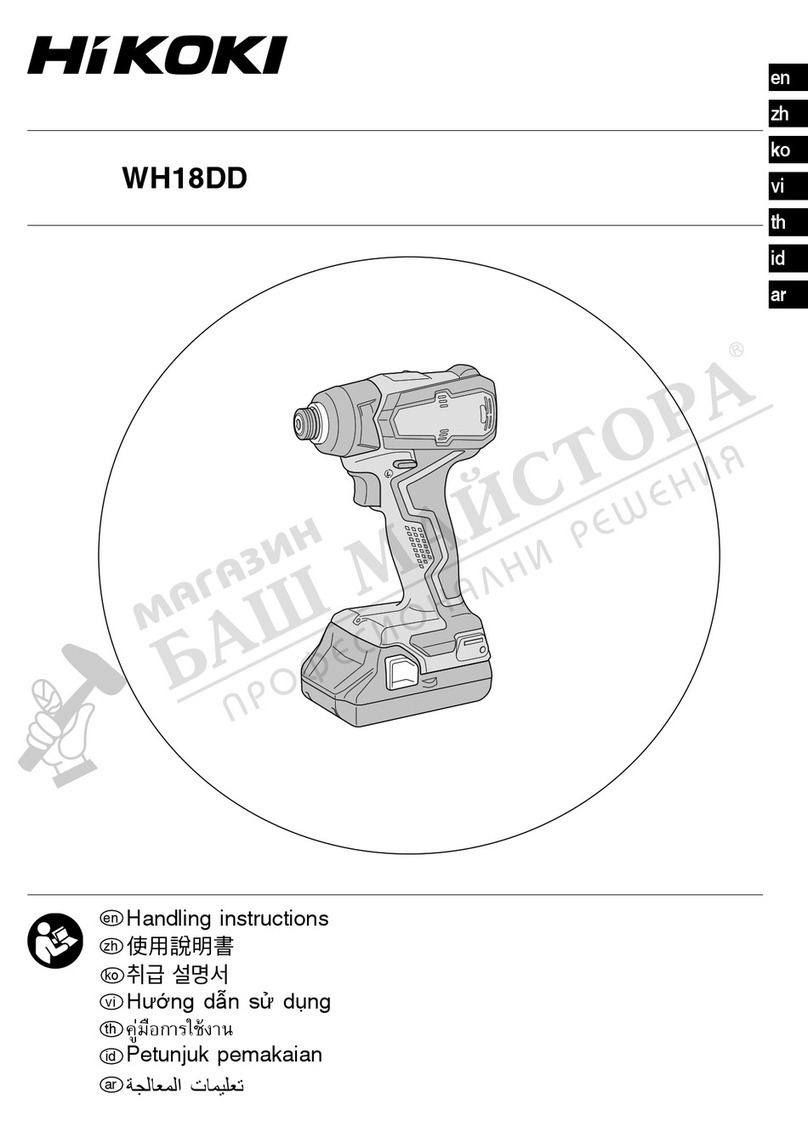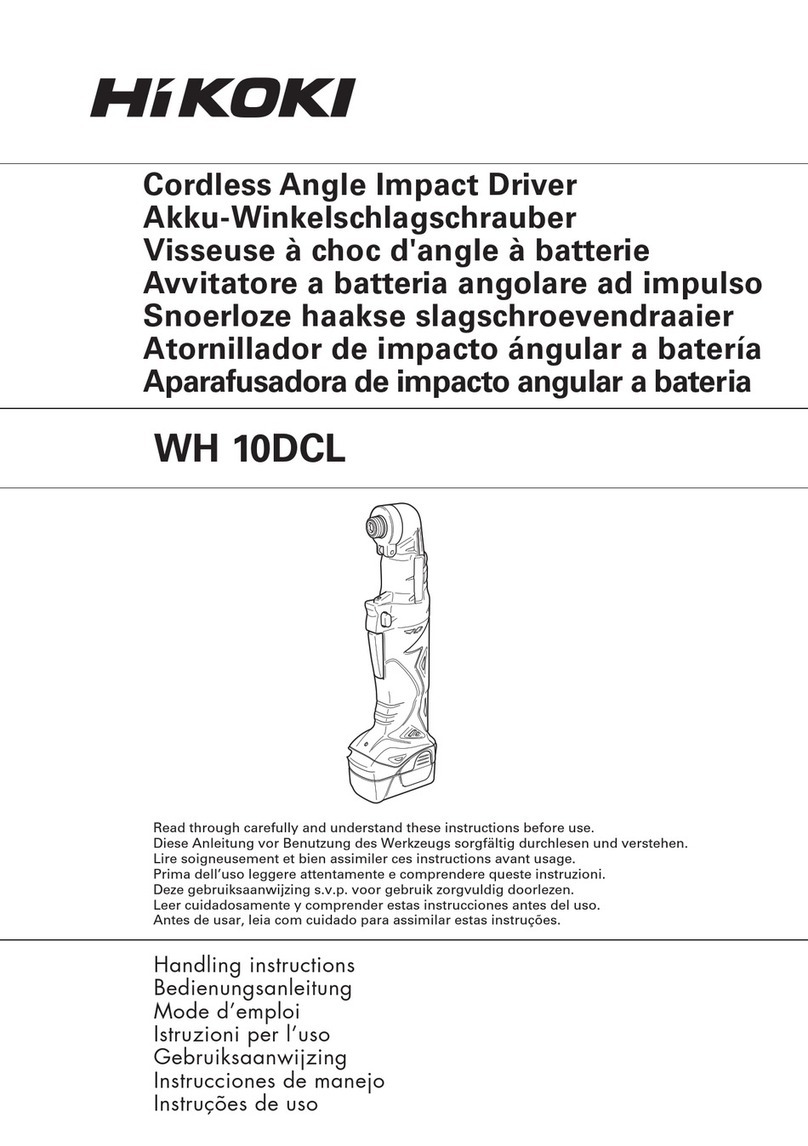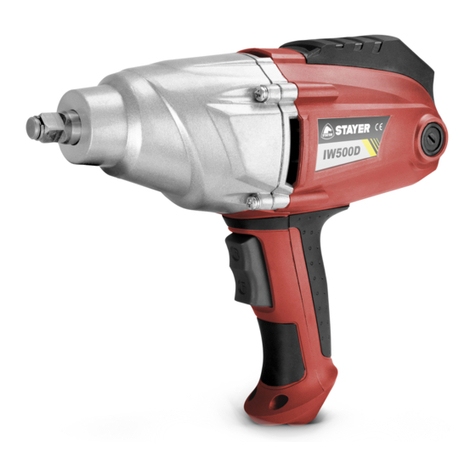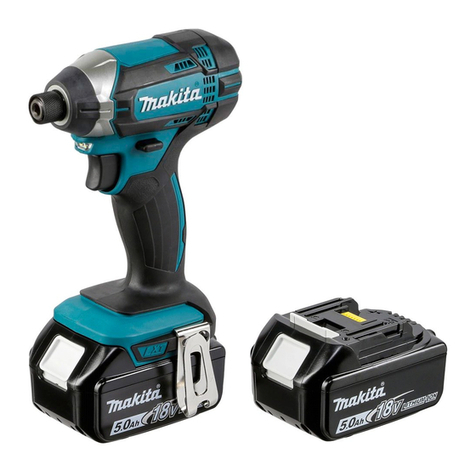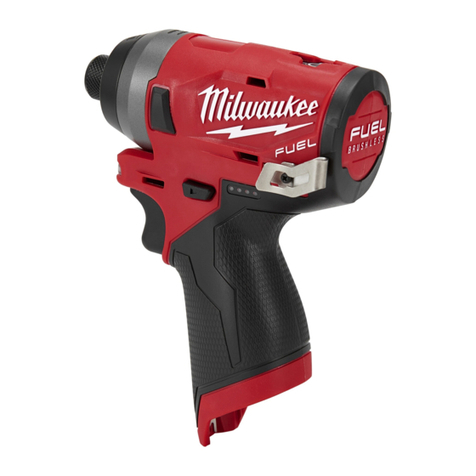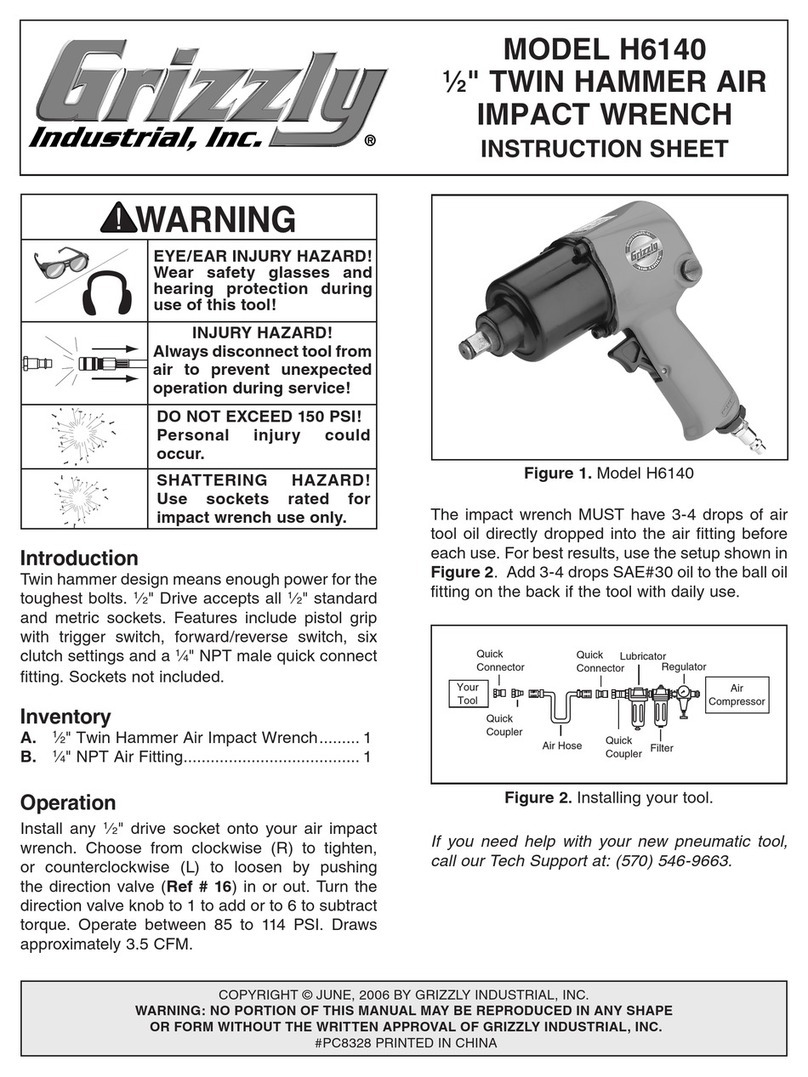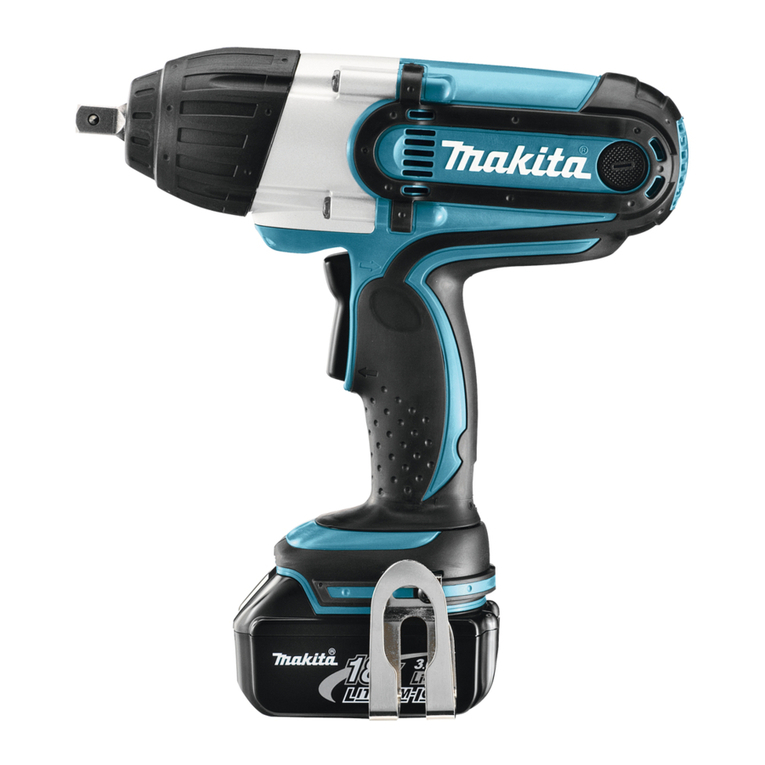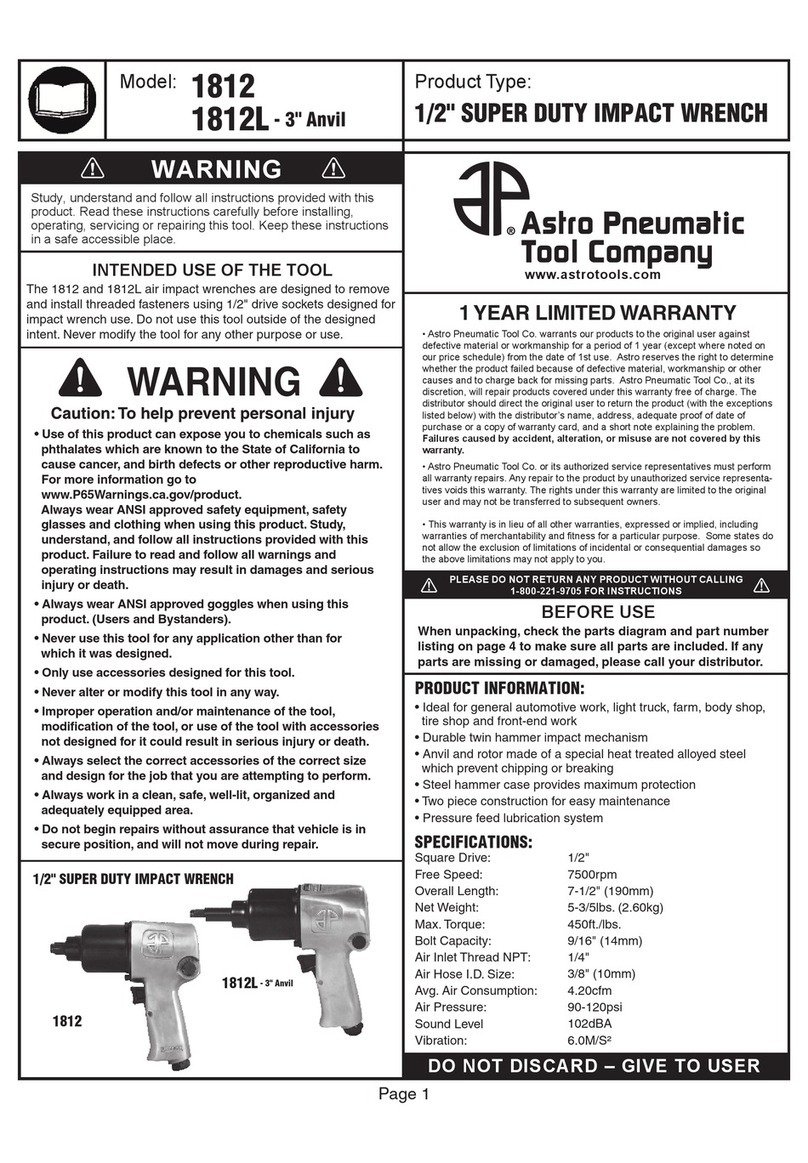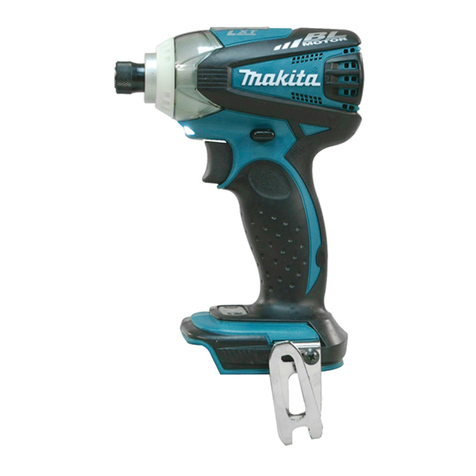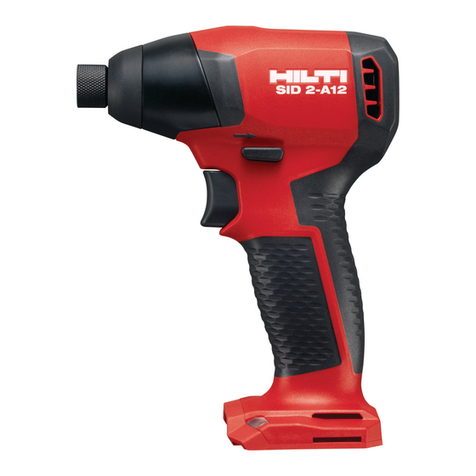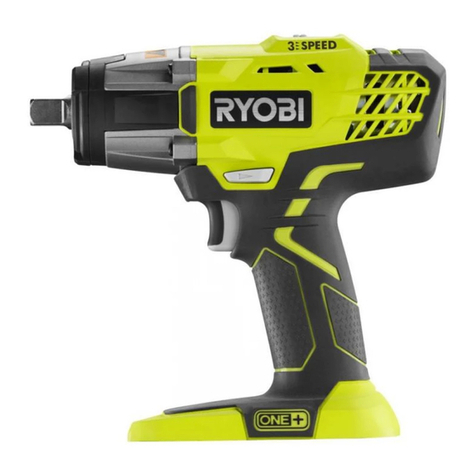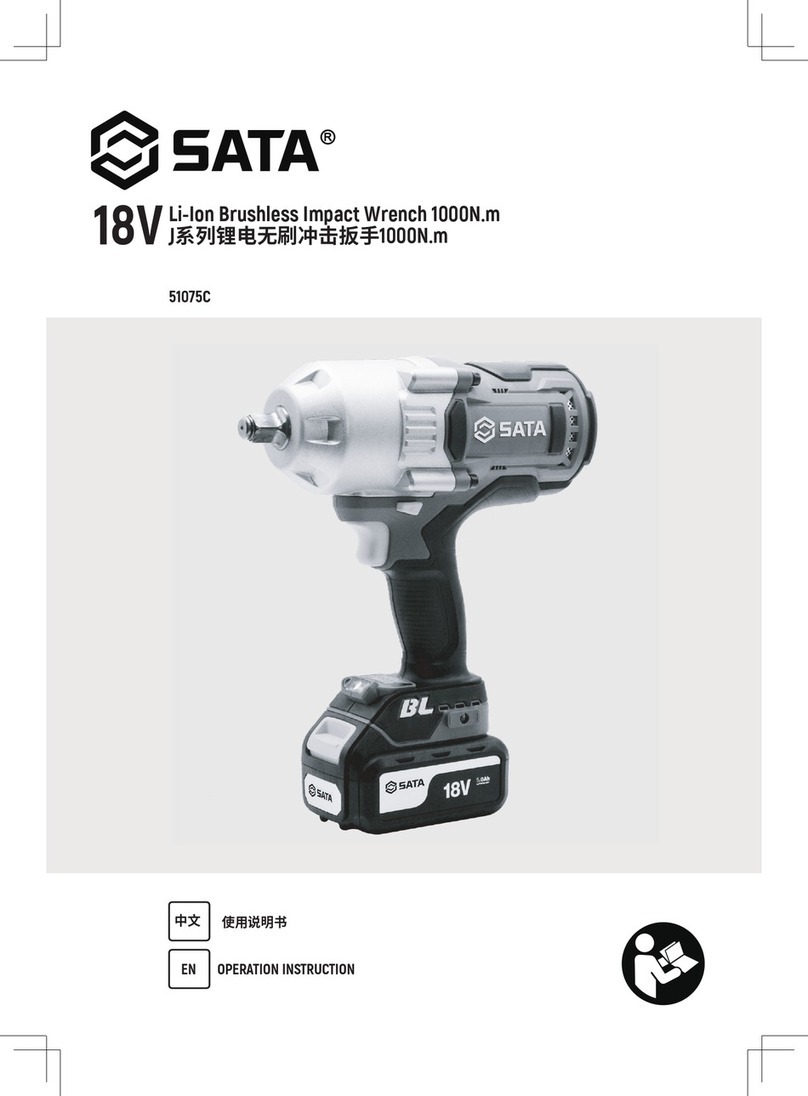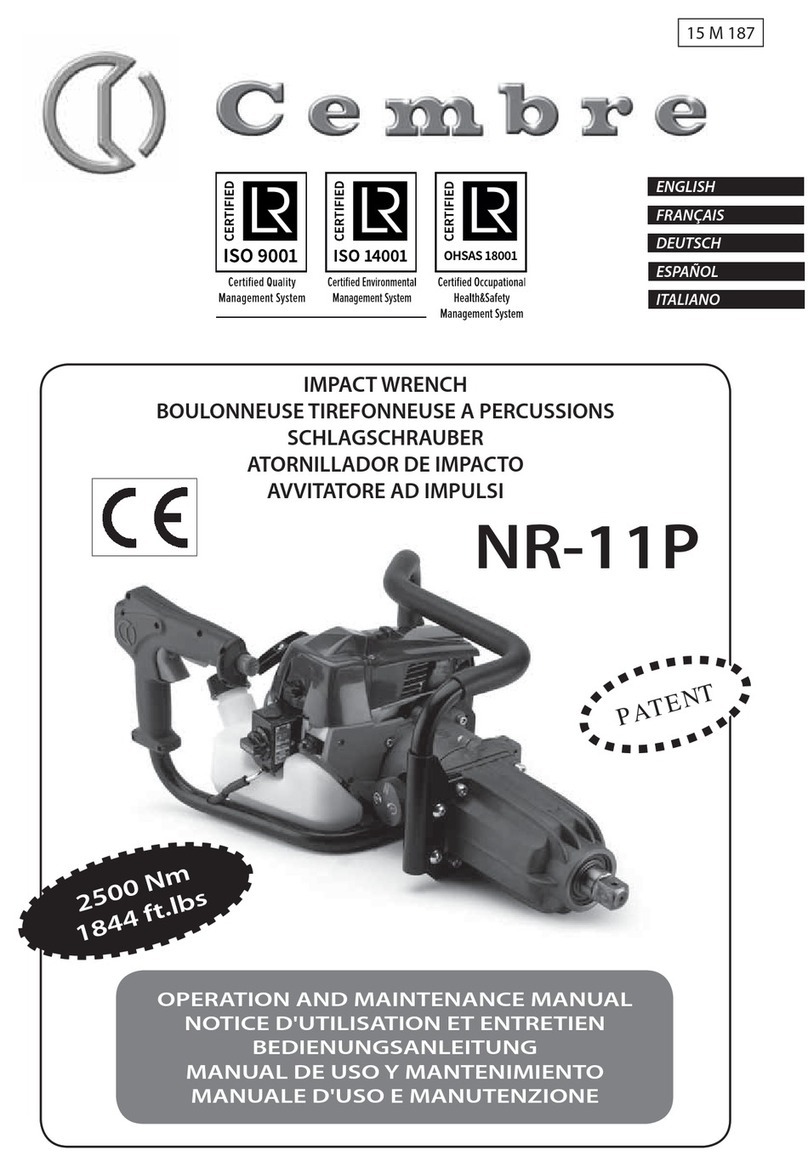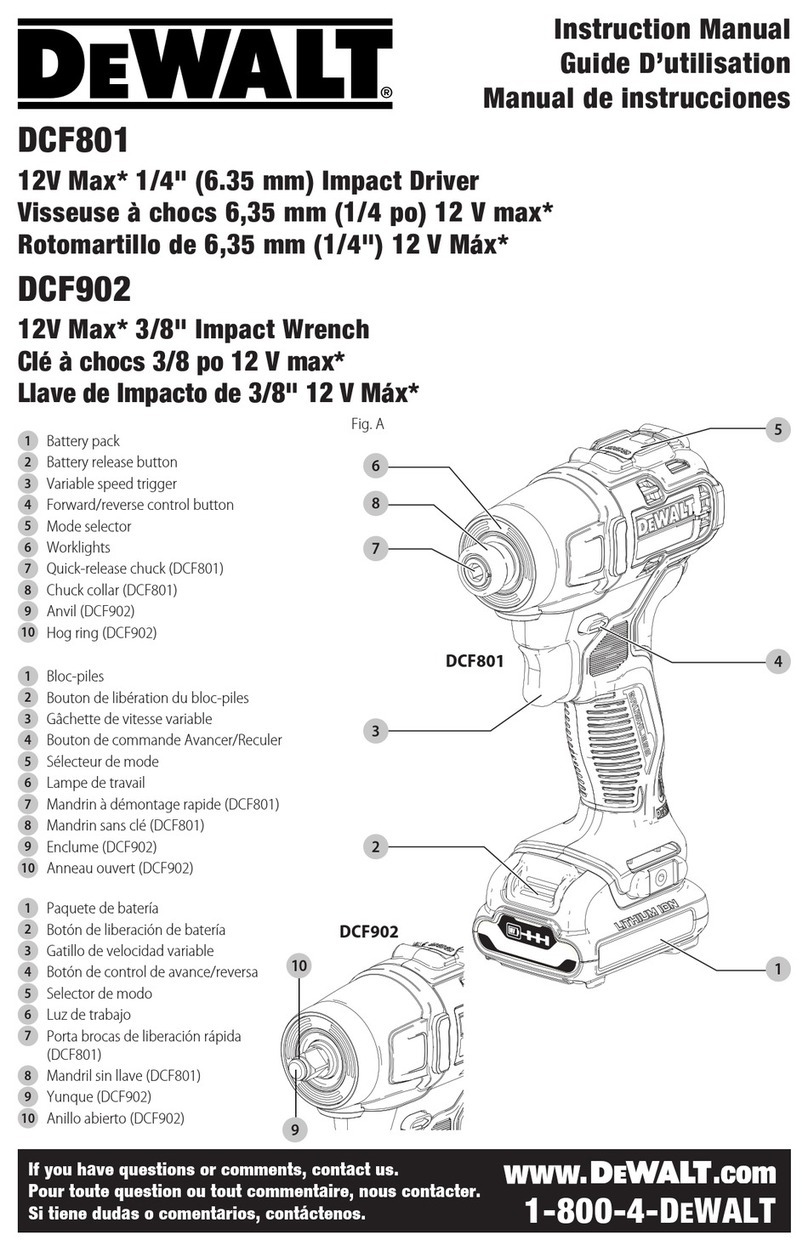
□
□
VII Page 6 of 15
caused by the use of the tool and also of trip hazards caused by the air line or hydraulic
hose.
- Proceed with care in unfamiliar surr oundings. Hidden hazards, such as electricity or other
utility lines, can exist.
- The power tool is not intended for use in potentially explosive atmospheres and is not
insulated against coming into contact with electric power.
- Make sure there are no el ectrical cables, gas pipes, etc., that can cause a hazard if
damaged by use of the tool.
DF Dust and fume hazards
- Dust andfumes generated when using power tools can cause ill health (for example,
cancer, birth defects, asthma and/or dermatitis); risk assessment and implementation of
appropriate controls for these hazards are essential.
- Risk assessment should include dust created by the use of the tool and the potential for
disturbing existing dust.
- Operate and maintain the tool as recommended in these instructions, to minimize dust
and fume emissions.
- Direct the exhaust so as to min imize disturbance of dust in a dust -filled environment.
- Where dust or fumes are created, the priority shall be tocontrol them at the point of
emission.
- All integral features or accessories for the collection, extraction or suppression of airborne
dust or fumes should be correctly used and maintained in accordance with the
manufacturer's instructions.
- Select, maintain and replace the consumable/inserted tool as recommended in the
instruction handbook to prevent an unnecessary increase in dust or fumes .
- Use respiratory protection in accordance with employer's instructions and as required by
occupational health and safety regulations.
NH Noise hazards
- Exposure to high noise levels can cause permanent, disabling, hearing loss and other
problems, such as tinnitus (ringing, buzzing, whistling or humming in the ears). Therefore,
risk assessment and implementation of appropriate control s for these hazards are
essential.
- Appropriate controls to reduce the risk may include actions such as damping materials to
prevent workpieces from “ringing”.
- Use hearing protection in accordance with employer's instructions and as required by
occupational health and safety regulations.
- Operate and maintain the power tool as recommended in the instruction handbook, to
prevent an unnecessary increase in noise levels.
- Select, maintain and replace the consumable/inserted tool as recommended in the
WH Workplace hazards
- Slips, trips and falls are major causes of workplace injury. Be aware of slippery surfaces
□
